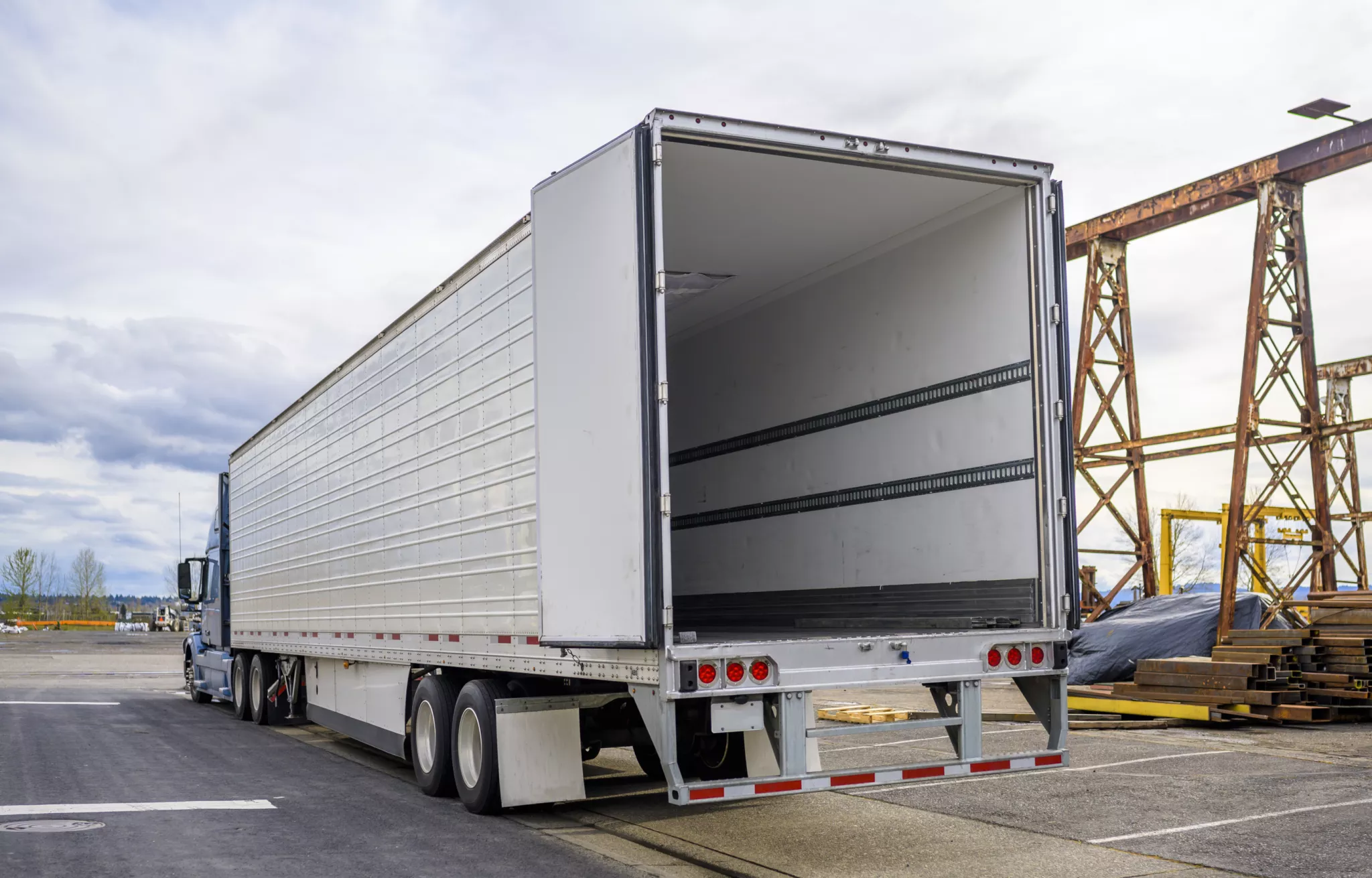Pre-trip truck inspection is of immense importance and understanding it will go a long way in guiding you on how to carry out such an examination. This crucial inspection will help you adhere to CDL guidelines developed by the Federal Government which are aimed at protecting people around you as well as yourself. Moreover, it forms a fundamental aspect of the evaluation for obtaining a Class A Commercial Driver’s License (CDL) and is required for those venturing into the trucking industry.
Within this manual, you’ll discover responses to common inquiries regarding pre-trip truck inspections. Additionally, we’ll furnish an illustrative pre-trip inspection checklist to assist you in initiating the process. This 15-minute pre-trip inspection is essential for every truck journey, and following a comprehensive truck inspection checklist ensures thoroughness and compliance.

What Does a Pre-Trip Truck Inspection Entail?
Before you hit the road, make sure you carry out a pre-trip truck inspection. At the very least, it needs to be done thoroughly on the three major systems and everything else on your truck, trailer, as well as load. Before driving, all parts, accessories, and system configurations have to be ensured by a driver. As outlined by the Department of Transportation (DOT), drivers are obligated to, at the very least, inspect the following:
- Service brakes and trailer brake connections
- Parking brakes
- Steering mechanisms
- Lighting devices
- Reflectors
- Tires
- Horns
- Windshield wipers
- Rear-vision mirrors
- Coupling devices
- Wheels
- Rims
- Emergency equipment
Additionally, pre-trip truck inspection reports should document any potential vehicle defects. It’s imperative not to embark on a journey if any issues are detected with the truck or its systems. Address the concern before resuming operation, and retain a copy of the report for a minimum of 12 months following the inspection, as mandated by the DOT. Drivers should also maintain well-organized compliance documentation for easy retrieval and review, encompassing the truck’s registration particulars, inspection tags, state permits, International Fuel Tax Agreement stickers, and paper logbook.
Pre-trip inspections serve to guarantee that your truck is operational before setting out, ensuring safety, adherence to regulations, and efficiency. Consequently, they must be conducted prior to a driver’s shift commencement and repeated every 24 hours while on the road. In accordance with the Federal Motor Carrier Safety Regulation (FMCSR), drivers are further required to submit a Daily Vehicle Inspection Report (DVIR) for each vehicle they operate daily.
Why Performing a Pre-Trip Truck Inspection is Crucial
Long haul driving ranks among the most dangerous jobs in the country, as United States Bureau of Labor statistics go on to prove. Against this backdrop, pre-trip truck inspection stands out as one important safety measure aimed at protecting people’s lives while at the same time making sure that other road users remain safe.
Yet, the significance of pre-trip checklists extends beyond mere safety protocols. Here’s why every trucker and their team should diligently conduct a thorough assessment before embarking on their journey.
Safety
One reason this is the case is that tragedies can be averted if drivers consider vital variables such as load, wheel and brake while on the road so as to foresee common potentially harmful scenarios that may arise.
Compliance
Commercial drivers have a legal obligation under government regulations to carry out pre-journey checks before starting work in order to improve safety standards on their vehicles, which could attract penalties against them for failing which would lower their CSA score indicating poor adherence to the rules.
Liability
The company is exposed to higher insurance costs when the driver has an accident even if they did not cause it due to insufficient previous inspection reports. Inspections that are done before a trip are a concrete measure that shows that precautions were taken to prevent any possible incident.
Breakdown Prevention
Conducting pre-trip inspections helps to stop minor problems growing into serious failures avoiding costly fixes and emergencies on the road. This in turn helps the track to move seamlessly with less financial strain through reduction of unforeseen costs for maintenance.
Revenue Preservation
If truckers examine their trucks before trips so that they are always in good shape, there are no delays during deliveries and they are sure of their income by managing disturbances to delivery schedules. Accidents and breakdowns have consequences that can lead to operational time wastage leading to missed deadlines and reduced earnings.
Determining the Duration of a Pre-Trip Inspection
There exists no standard timeframe for completing a comprehensive pre-trip inspection. Typically, a thorough examination may span anywhere from 15 to 30 minutes. However, the duration can fluctuate based on various factors. The paramount objective remains ensuring the truck’s roadworthiness and safety before commencing the journey, a task that may require varying lengths of time.
The essence of conducting a truck assessment lies in methodical scrutiny rather than hastiness. Rushing through the inspection process risks overlooking crucial details, potentially endangering oneself and others on the road. Thus, it’s imperative to adopt a deliberate pace, meticulously inspecting each component of the vehicle. Prioritize a comprehensive evaluation, directing attention to often neglected areas such as brake systems, tire conditions, fluid levels, coupling mechanisms, and the availability of emergency equipment.
Guide to Completing a Pre-Trip Truck Inspection
Utilizing inspection checklists is instrumental in ensuring a thorough examination of your truck while streamlining the process for enhanced accuracy. Each trucking company should develop its pre-trip inspection checklist in adherence to the regulations laid out by the Federal Motor Carrier Safety Administration (FMCSA).
Outlined below are essential items to incorporate into your checklist:
Step #1 – Engine Compartment Inspection
Begin by inspecting the engine compartment, assessing the levels of oil, coolant, and power steering fluid. Pay close attention to hoses for signs of leakage, fraying, or damage. Verify the secure mounting and optimal condition of the following components:
- Radiator;
- Alternator;
- Air compressor;
- Belts;
- Water pump;
- Power steering pump;
- Hoses;
- Wiring;
- Suspension system;
- Steering system;
- Front brake system.
Step #2 – Lights and Reflectors Examination
Test all lights, including warning lights, turn signals, and reflectors. Verify the functionality of left and right turn signals, four-way flashes, high and low beams, and brake lights. Regularly check reflectors for functionality and clarity, ensuring they are free from debris accumulation caused by UV exposure.
Step #3 – Windshield Wipers and Mirrors Assessment
Inspect the cleanliness and integrity of cab windows and mirrors, ensuring they are devoid of cracks, defects, or any obstructive elements. Remove any items from the dashboard that may cause reflections or distractions. Test the functionality of windshield wipers and washers to confirm their good condition and operational status.
Step #4 – Battery and Trailer Coupling Area Inspection
Moving on, focus on the truck’s fuel tank and battery region, noting the battery levels for assessment. Verify the secure condition of the following components, ensuring they meet standards and are devoid of cracks, breaks, or leaks:
- Exhaust system;
- Battery box;
- Batteries;
- Fuel caps;
- Driveshaft;
- Catwalk;
- Steps;
- Frame;
- Crossmembers;
- Airlines;
- Apron;
- Gaskets;
- Suspension system;
- Brake chambers;
- Slack adjusters;
- Pushrods.
Step #5 – Fluids Check
Examine the ground beneath the truck’s cab to detect any signs of fluid leakage. Look out for stains indicating leaks of fuel, oil, coolant, power steering fluid, or brake and windshield washer fluids.
Step #6 – Brake Inspection
Prior to vehicle operation, conduct a comprehensive assessment of all brake systems. Inspect brake pads, drums, and slack adjusters, ensuring they are free from wear or cracks. Check the integrity of brake airlines for proper sealing and absence of leaks. Pump the brakes four to five times to ensure proper alignment before departing.
Step #7 – Tire Examination
Proceed to inspect the air pressure of both cab and trailer tires, followed by a thorough examination of tread wear for evenness. Confirm each tire’s adequate thickness and grip while checking for cuts or defects. Ensure no stones or debris are lodged between dual wheels and verify tightness of lug nuts, axle seals, and absence of rust on wheel fasteners.
Step #8 – Trailer Assessment
Conduct a meticulous inspection of all trailer components to confirm secure mounting and absence of cracks, breaks, or holes. Ensure the following elements are in prime condition:
- Frame;
- Crossmembers;
- Headboard;
- Release handles;
- Release pins;
- Locking pins;
- Doors;
- Hinges;
- Mudflaps;
- Door seals.
Step #9 – Cabin Inspection
Ensure the functionality of all cabin components. Verify that gauges, air brakes, and other systems within the cab are operational and undamaged, including:
- Seat belts;
- Steering wheel;
- Pedals;
- Voltmeter;
- Oil pressure gauge;
- Water temperature gauge;
- Air pressure gauge;
- Fuse box;
- Air horn;
- City horn;
- Heater;
- Defroster;
- Parking brake.
Additionally, prioritize driver comfort to minimize distractions on the road. Adjust seating and steering wheel positions as needed before departure. Fine-tune temperature or heating settings according to the season to prevent potential windshield obstructions, promoting driver comfort, alertness, and focus during travel.
Step #10 – Emergency Kit Check
As mandated by law, drivers must carry emergency equipment kits in their trucks to prepare for unexpected situations, including breakdowns. These kits encompass tools and equipment essential for addressing various emergencies.
Before embarking on your journey, ensure your truck’s emergency kit is adequately stocked and all items are functional. While the Department of Transportation (DOT) specifies essentials like fire extinguishers, spare fuses, and warning devices for stopped vehicles, consider including additional items such as:
- Reflective triangles;
- Warning flags;
- First-aid kit;
- Safety vest;
- Jumper cables;
- Flashlight;
- Strobe lights;
- Batteries.
Ensuring Safety and Efficiency On the Road
Implementing pre-trip checklists is crucial for maintaining safety and productivity on the road, ultimately contributing to the profitability of your trucking company. These checklists should comprehensively cover all aspects of your truck, trailer, and cargo to ensure secure, punctual, and efficient delivery schedules. Tailoring the checklist to your specific needs allows for the inclusion of additional items, providing an extra layer of assurance. Every detail must be meticulously addressed to safeguard both your own and others’ well-being.
Understanding what is a pre trip inspection and how long should a pre trip inspection take is essential for every truck driver. A thorough truck pre trip inspection is not only a regulatory requirement but also a proactive measure to identify potential issues before they escalate into safety hazards or costly delays. By adhering to a structured pre trip inspection checklist, you ensure that critical components are examined methodically, minimizing the risk of breakdowns or accidents on the road.
At Logity Dispatch, we emphasize the importance of pre trip inspections as part of our commitment to safety and efficiency in trucking operations. Our comprehensive approach ensures that drivers are well-equipped with the knowledge and tools necessary to conduct thorough inspections, contributing to reliable and timely deliveries for our clients. Contact us today to get seamless dispatching services and full paperwork management!







